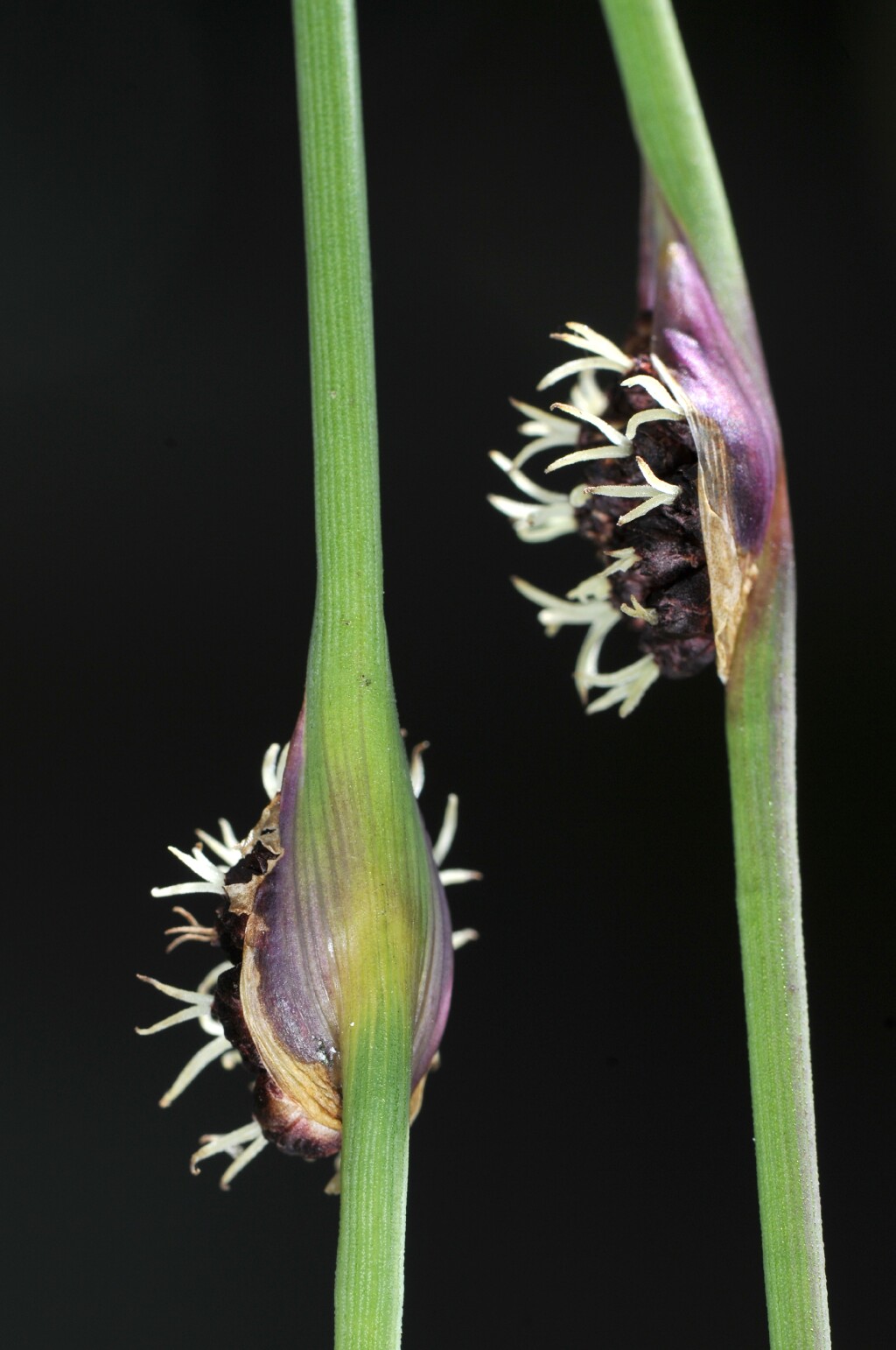Chorizandra cymbaria
R.Br. Heron Bristle-rushPerennial with slender but tough rhizome. Culms unitubular, often pluritubular near base, transverse septa usually obvious externally, often glaucous when immature, yellow-green at maturity, longitudinally striate and usually minutely warty at least near apex, 50–100 cm high, 1.3–4 mm diam. Inner leaf-blades from one-half to two-thirds length of culms, usually slightly thicker than culms, unitubular, rarely pluritubular near base; sheaths loose, yellow- to red-brown, to 25 cm long. Inflorescence narrow-ovoid to ovoid or rarely globose, 11–15 mm long, 5–10 mm wide, with c. 10–30 pseudospikelets; core not or scarcely raised. Involucral bract to 10 cm long, unitubular; margins of base yellow-chartaceous, red-dotted, sheathing sides of inflorescence. Pseudospikelets with 16–25 glumes, 13–20 stamens; glumes oblong to spathulate, the lowest keeled towards apex, glabrous, dark or pale red-brown or rarely golden yellow towards apex, 3–4.5 mm long; apex obtuse, usually irregularly toothed. Nut with 4–8 longitudinal ridges and faint irregular transverse ridges, red-brown, 2.7–4 mm long, 1.5–2.7 mm diam Flowers spring–summer.
VVP, GipP, CVU, GGr, EGL, WPro, HSF. Also WA, Qld, NSW. New Caledonia. Scattered but uncommon throughout southern Victoria, in swampy lowlands and on stream margins. .
Wilson, K.L. (1994). Cyperaceae. In: Walsh, N.G.; Entwisle, T.J., Flora of Victoria Vol. 2, Ferns and Allied Plants, Conifers and Monocotyledons, pp. 238–356. Inkata Press, Melbourne.
 Spinning
Spinning

